by James Scott Bell
@jamesscottbell
Today’s first page is a thriller submission. Read it, then we’ll talk.
Out of the Cold
Cara Conroy sat straight up in bed. Sweat soaked both her and the bedding. Instinct drove her hand into the nightstand draw and around the grip of her Glock 26. Her eyes swept the haze of her moon-draped room.
Sampson perked his ears and padded to the bed, laying his muzzle next to Cara’s leg. His soulful eyes searched hers, hypervigilant and ready to pounce at a moment’s notice.
It had happened again. She was absolutely positive.
Cara fought the urge to run to the next room and check on her daughters. She knew they were fine, but so had all the mothers whose children hadn’t been. She heard it all the time—I looked away for just a second—and a second was all it took.
The urge won. She threw back the covers. Her feet barely touched the floor before she raced, heart pounding, Sampson on her heels.
She held her breath. The Glock shook ever so slightly as she toed the door open a crack. The light from the hallway sliced into the darkness, and illuminated the innocent faces of her daughters who lay sleeping, unaware of the dangers lurking for them in an evil world.
Sampson stealthed into the room and nosed each girl in turn. The ceiling fan thrummed its constant low thump like a tire out of round. Cara searched for Raina’s faint snore, an assurance the child was still breathing. After finding its reassuring cadence, she lowered her weapon and dragged back to her bedroom. Inside the sanctity of her own room, she closed the door and leaned her back against it, allowing it to support her controlled collapse.
Silent sobs wrenched her gut.
***
JSB: This author can write. The prose flows. Exposition and description are kept to a minimum, but with just enough to give us a feel for the setting and the setup.
All good. But I have an overarching critique, which I’ll attempt to explain.
What we have here is a type of opening that agents warn about, namely the “character alone” variety. I see two types of these. The first type is “character alone, thinking/feeling.” This is when the author gives us a character who is in the throes of some deep emotion or thinking about some terrible situation. The author believes this will immediately bond us to the character. It doesn’t, because we don’t know the character yet. The author is asking us to sympathize with a stranger.
But Jim, this is the first page! Of course the Lead is a stranger!
True that, but the better way to get to know a stranger is by observing what they do.
Which leads me to the second type of “character alone” opening, one that is functionally better: character alone, doing. When we see a character engaged in some sort of action that holds our interest, we’ll follow her for a long time before wanting more exposition.
JSB Axiom: Act first, explain later.
So why am I not giving full-throated approval to this opening, which is a clear case of character-doing, along with the elements of fear and child endangerment? Isn’t that the very essence of what I preach for the opening—a disturbance?
Stay with me on this.
You know how we’re warned about not opening with a dream? I agree with that. You read an incredibly gripping opening chapter, only to have the character wake up at the end. It feels like a big cheat, a bait-and-switch.
Because it is.
(Literary mavens may delight in reminding yours truly about one of the most famous openings of all time, from Daphne Du Maurier’s Rebecca: Last night I dreamt I went to Manderley again. Of course that is not a cheat because the narrator tells us up front that she’s describing a dream. But thanks for playing.)
This opening is not a dream, but it has a bit of bait-and-switch to it. It gives us a potential threat, but it turns out only to be in the Lead’s head.
We get this set up: It had happened again. She was absolutely positive.
Okay, we think, “What is it?” We read on.
In the next paragraph we get the answer: there have been kidnappings of small children! So Cara grabs her Glock and checks on her kids.
Is there a kidnapper in the house? Are her children gone?
Nope, all is well.
So there was never really an it. It feels a bit like waking from a dream, no?
One way out of this is to put an actual it in the scene—a real noise, a seen shadow, an open window. True, a disturbance that awakens the Lead is a bit of a cliché, but I don’t think readers care if the writing is taut and action-oriented (which this author is capable of).
There’s also disconnect here that lessens the tension. Look again at: It had happened again. She was absolutely positive. Okay, fine. That’s why she woke up in a sweat, right? And we’ll find out it’s because of the kidnappings that have happened.
But then we get: She knew they were fine.
Wait, what? A second ago she was absolutely positive it had happened again.
So if she knows they’re fine, why the sweats and the Glock?
Also, the it alluded to appears to be about children kidnapped in public. I looked away for just a second.
But this scene is taking place inside a home.
Further, if Cara is so concerned about a potential kidnapping, why isn’t she sleeping in the same room with her daughters? Why doesn’t she have a security system? Why doesn’t she station her hypervigilant dog near the front door?
So when at the end of the scene Cara collapses as silent sobs wrench her gut, I’m unmoved.
I’m also confused because a silent sob is an oxymoron. A sob is, by definition, a sound. You can have a loud sob, a weak sob, a low sob…but not a silent sob.
Yet, whatever it is, it is wrenching her gut.
But why such a reaction? Cara seems to be on the edge of a nervous breakdown because of some kids being snatched somewhere out there in an “evil world.” The collapse into gut wrenching sobs is meant to garner our sympathy. Instead, it causes me alarm about her mental state. What it doesn’t do is compel me to care about the character.
Here’s a suggestion that will help you here, dear writer. And also anyone writing a scene of heavy emotion.
Show us the character fighting against the emotion, not succumbing to it.
This has a two-fold benefit.
First, it give us an action rather than a reaction. The action can be internal (She told herself she would not cry! Her kids needed her…) or external (She took a deep breath and forced herself to stand…) or a combo of both.
Second, we are drawn to characters who, by strength of will, fight against obstacles in their way. We don’t have sympathy for characters who don’t fight.
The only thing Cara fights in this scene is the urge to run to the next room and check on her daughters. But why? She’s sweating, armed, worried about her children. Why would she fight against checking on them?
In sum, the actions taken and motivations for same confuse me.
So I offer these takeaways:
- Re-think your opening to give us real action in response to real stimuli.
- Show your character fighting, internally and/or externally, against breaking down. She has her kids to protect!
Notes:
the nightstand draw
Should be drawer.
Sampson stealthed into the room
Be very careful when stretching a word into a new meaning. I was pretty sure stealthed was not a word, so I looked it up. Ack! It apparently is a word, a slang term, and not one to be used in polite society.
nosed each girl in turn
I get a picture of the dog poking the girls with his nose, making me wonder why they didn’t wake up. I would think a mom wouldn’t want the dog to disturb her softly sleeping daughters. Did you mean sniffed?
Cara searched for Raina’s faint snore
I’m not sure you can search for a sound. You can certainly search for the source of a sound. But Cara knows the source. Use listened instead.
After finding its reassuring cadence
Again, finding is the wrong word in this context. Use hearing.
she lowered her weapon
Ack! She was pointing a loaded weapon into a dark room where her children are sleeping? The most basic of rule for loaded handguns is don’t point them in an unsafe direction. This is especially so if the gun is shaking in her hand! What if it goes off accidentally?
A Final Word
Don’t let any of this discourage you, writer friend. You’ve got what it takes to write good, gripping scenes. So go forth and write them. Get them critiqued, and write some more.
And never stop.
Carpe Typem.
Comments are welcome.
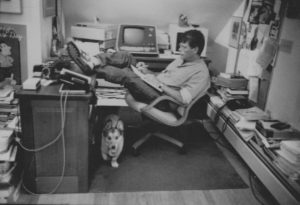 “While it is impossible to make a competent writer out of a bad writer, and while it is equally impossible to make a great writer out of a good one, it is possible, with lots of hard work, dedication, and timely help, to make a good writer out of a merely competent one.” – Stephen King, On Writing
“While it is impossible to make a competent writer out of a bad writer, and while it is equally impossible to make a great writer out of a good one, it is possible, with lots of hard work, dedication, and timely help, to make a good writer out of a merely competent one.” – Stephen King, On Writing 
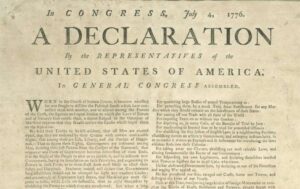
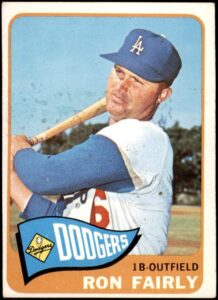

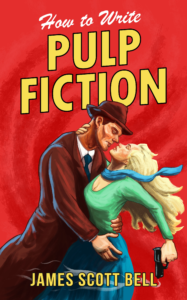
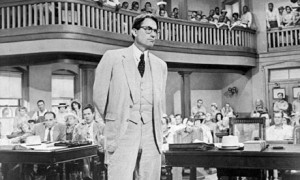
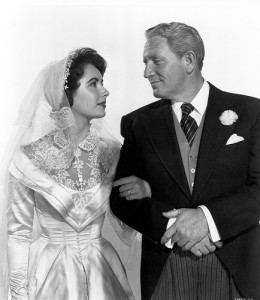

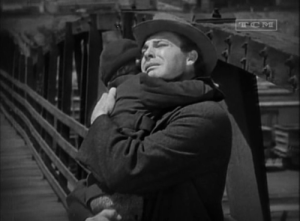

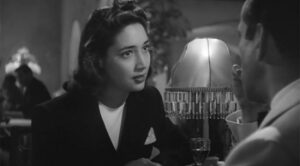

 Coming up with a great idea, one that gets your nerve endings buzzing, is like love at first sight. You’re giddy. You can’t wait to spend precious months with this new romance.
Coming up with a great idea, one that gets your nerve endings buzzing, is like love at first sight. You’re giddy. You can’t wait to spend precious months with this new romance. Once you have a complete draft, you move into the hard-scrapple world of revision. And here you need a system.
Once you have a complete draft, you move into the hard-scrapple world of revision. And here you need a system. I know a demoralized writer. [Note: This is a composite portrait, though everything in it is fact based.] Said writer had written a number of good novels for a small house, then landed a two-book contract with one of the Big 5. The first book came out to mostly positive reviews, but not massive sales. The second book had to build on the first and make some serious money to justify the advance. The author worked really, really hard on this novel. It was in a popular genre, had a good title, and a great cover. The writer did all the right things marketing-wise, too.
I know a demoralized writer. [Note: This is a composite portrait, though everything in it is fact based.] Said writer had written a number of good novels for a small house, then landed a two-book contract with one of the Big 5. The first book came out to mostly positive reviews, but not massive sales. The second book had to build on the first and make some serious money to justify the advance. The author worked really, really hard on this novel. It was in a popular genre, had a good title, and a great cover. The writer did all the right things marketing-wise, too.
